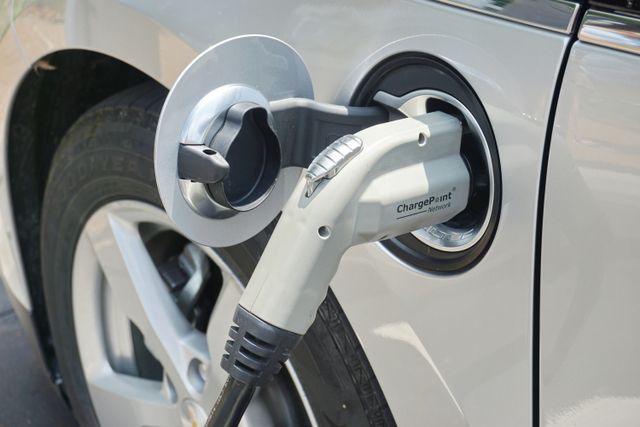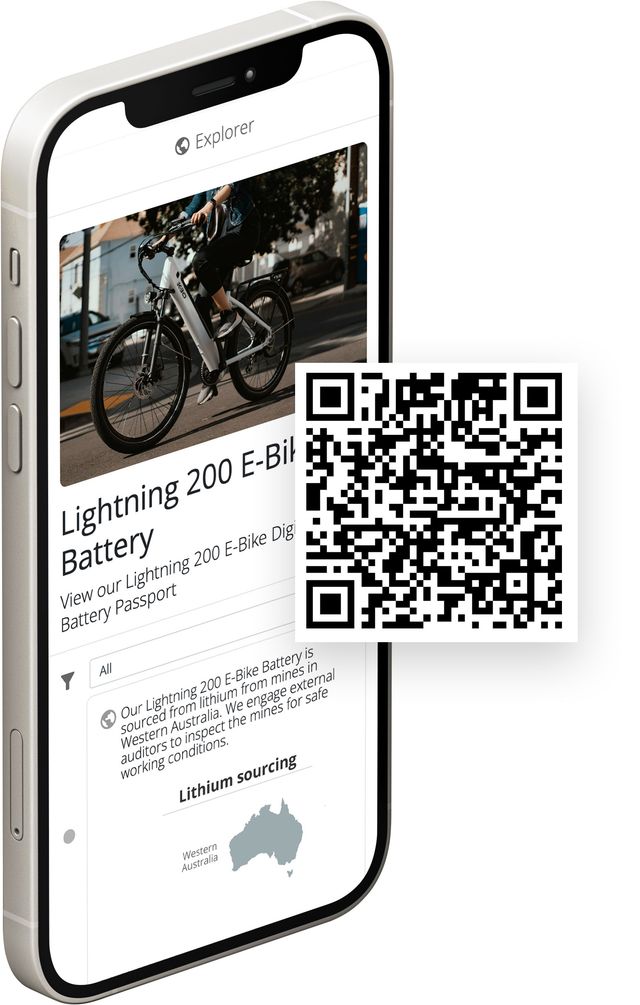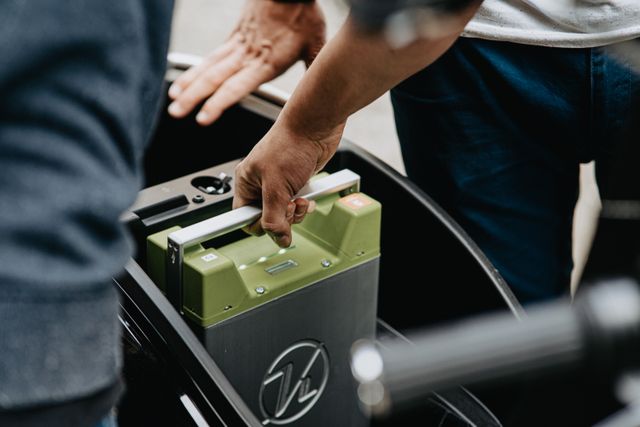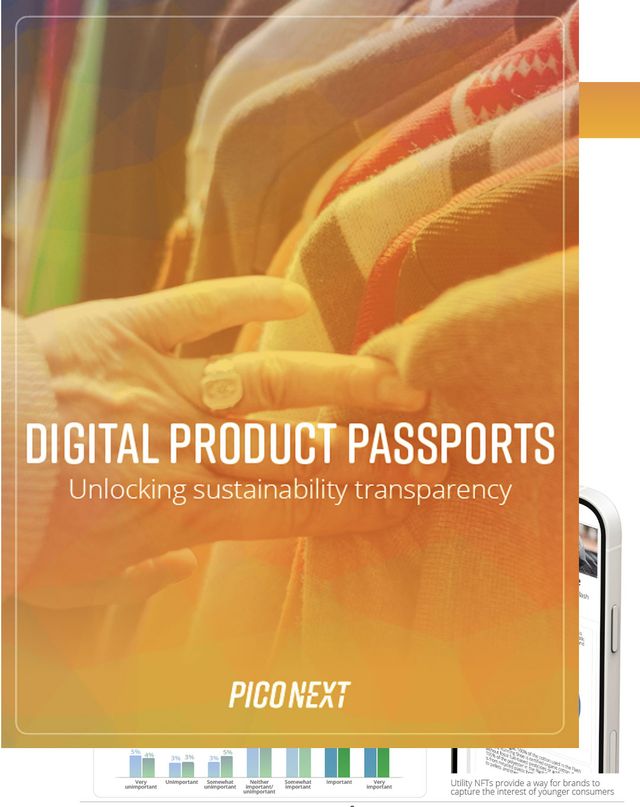What is a Digital Battery Passport?
A Digital Battery Passport allows consumers to access sustainability and usage information about a battery, in an accessible way via QR code. In doing so, they can make informed decisions about the batteries they purchase, and select ones that contribute to a circular economy – one in which batteries are responsibly sourced, handled sustainably, and disposed of correctly, and re-manufactured or recycled. A Battery Passport requires manufacturers to collect a variety of information about a battery — including information about raw material sourcing, technical specifications, hazardous materials, disposal, and more.
Why is a Digital Battery Passport important?
The European Union views batteries as an important way to transition to a green economy, in terms of clean energy and net-zero emissions. As a result, it is focusing on specific categories of batteries it views as not only contributing to sustainability development, but also that form the cornerstone of battery demand for the next few years. These battery categories include industrial batteries with a capacity greater than 2kWh, electric vehicles (EV) batteries, and light means-of-transport (LMT) batteries (like for e-bikes).

Along with the role of batteries in facilitating a green economy, they do come with concerns in a few areas. They can be hazardous when not disposed of correctly, owing to the lithium the batteries contain. Sourcing raw materials for battery manufacturing can present social and environmental risks. And carbon footprints should be evaluated and minimised as batteries are produced.
A "Digital Battery Passport" provides information on these areas, and more, so that consumers and other stakeholders can make the best decisions about purchasing, using, disposing of, and recycling batteries. In this way, they can facilitate a green economy – one with reduced emissions, and more sustainable development goals.
Digital Battery Passport timeline and background
In recent years, the European Union has implemented several regulations that address sustainable development, and the transition to a green economy. The 2023 E.U. Batteries Regulation is an outgrowth of this environmentally focused rulemaking.
- EU Battery Directive - A 2006 directive that outlines requirements around collecting, recycling and disposing of batteries, as well as rules regarding hazardous substances and batteries
- The European Green Deal - A 2019 law that sets an E.U.-wide goal of zero net greenhouse gas emissions by 2050, along with a decoupling of economic growth from resource use
- Circular Economy Action Plan - a 2020 communication outlining steps to take towards a circular economy, in which “the value of products, materials and resources is maintained in the economy for as long as possible, and the generation of waste minimised”1
- European Commission’s 2020 Industrial Strategy - Lays out the vision for a ‘twin transition’ to climate neutrality and digital leadership
- Ecodesign for Sustainable Products Regulation (ESPR) - A 2022 regulation that expands sustainability requirements from the narrower, energy-focused 2009 Ecodesign Directive to a broader set of products, and outlines the concept of a Digital Product Passport
- E.U. Batteries Regulation - A law adopted in July 2023 that addresses the sustainability of batteries throughout their lifecycle, and outlines specific Digital Product Passport rules for batteries (“Digital Battery Passport”, or “Battery Passport”)

Who is required to create a Digital Battery Passport?
The E.U. Batteries Regulation requires that an “economic operator” who places a battery for sale on the E.U. market to produce a Digital Battery Passport for it. Typically, this is understood to be the manufacturer, but could also include the manufacturer’s representative, an importer, a distributor, or a fulfilment provider who places batteries on the E.U. market.2
What is the relationship between a Battery Passport and a Digital Product Passport?
The 2022 E.U. Ecodesign for Sustainable Products Regulation (ESPR) outlines sustainability requirements and the concept of a Digital Product Passport for a variety of product categories, including Information and communications technology (ICT), Electronics, Batteries, Vehicles, Textiles / Fashion, Plastics, Furniture, Construction and buildings, Chemicals. The ESPR legislation envisions subsequent rulemaking over the next several years to define the requirements for Digital Product Passports in each of these industries. The 2023 E.U. Batteries Regulation is the first industry with specific Digital Product Passport requirements. A Digital Battery Passport, then, is a specific implementation of a Digital Product Passport.
What information should a Battery Passport contain?
The E.U. Batteries regulation outlines the information that should be included in a Battery Passport, and made available via QR code to interested stakeholders. Of particular note with a Digital Battery Passport is that it identifies several different classes of information that should be included, namely:
- Public information about the battery
- Battery information available to those with a need-to-know, as well as the European Commission (EC)
- Battery information available to the EC, national regulatory organisations (“notified bodies”), and market surveillance authorities
- Individual battery item-level information available to those with a need-to-know
It also indicates that most information should be specific to the battery model, with the exception of the last point, which is at the individual item level. Some companies are considering Digital Product Passport implementation specific to manufacturing batch or individual product item level, in order to enable traceability across the supply chain.
Public information about the battery
In the public section of the battery passport, a variety of information is required to be made available to stakeholders, including the following:
- Manufacturer identifying information, including: name, address, point-of-contact, Web address, and email
- Battery category, and model identification and batch / serial number
- Place of manufacture
- Date of manufacture (month and year)
- Battery weight
- Battery chemistry
- Hazardous substances present in the battery (other than "mercury", "cadmium", or "lead")
- Usable extinguishing agent (in case of fire)
- Critical raw materials in the battery in a concentration of more than "0.1%" by weight
- Carbon footprint information, including:
- The carbon footprint of the battery, calculated as "kg of carbon dioxide equivalent" per one "kWh" of the total energy provided by the battery over its expected service life
- The carbon footprint of the battery differentiated according to life cycle stage as
- The EU declaration of conformity ID number
- A Web link giving access to a public version of the study supporting the carbon footprint values of the battery
- Information on responsible sourcing as indicated in battery’s due diligence report
- Recycled content information, including:
- Information about the percentage share of "cobalt", "lithium" or "nickel" present in active materials and that has been recovered from either battery manufacturing waste or consumer waste
- The percentage share of "lead" present in the battery and that has been recovered from waste, for each battery model per year and per manufacturing plant.
- A series of technical indicators about the battery, including:
- Capacity (in "amp-hours")
- Minimal, nominal and maximum voltage, with temperature ranges when relevant
- Original power capability (in "Watts") and limits, with temperature range when relevant
- Expected battery lifetime expressed in cycles, and reference test used
- Capacity threshold for exhaustion (only for "EV" batteries)
- Temperature range the battery can withstand when not in use (reference test)
- Period for which the commercial warranty for the calendar life applies
- Initial round trip energy efficiency and at "50%" of cycle-life
- Internal battery cell and pack resistance
- C-rate of relevant cycle-life test
- Relevant markings for non-rechargeable batteries, and to indicate separate waste collection
- The battery’s EU declaration of conformity
- Information on battery disposal, re-use, repurposing and remanufacturing, including:
- The role of consumers in separating batteries for waste collection
- Collection, take-back, repurposing, treatment options available for waste batteries
- Safety instructions to handle waste batteries
- Meaning of labels and symbols on batteries
- The impact of hazardous substances contained in batteries
As mentioned, there are other categories of information in a Digital Battery Passport that aren’t publicly available, but are only available to governmental bodies and others with a need-to-know. Often, these classes of information include proprietary data that could be used competitively against a battery manufacturer if publicly available. The E.U. Batteries Regulation specifies the following classes of non-public information in a Digital Battery Passport.
The following non-public information is required at the battery model level
- Detailed composition, including materials used in the cathode, anode and electrolyte
- Part numbers for components and contact details of sources for replacement spares
- Safety measures
- Dismantling information, including:
- Exploded diagrams of the battery system/pack showing the location of battery cells
- Disassembly sequences
- Type and number of fastening techniques to be unlocked
- Tools required for disassembly
- Warnings if the risk of damaging parts exists
- Amount of cells used and layout
The following non-public information is required at the battery model level:
- Results of test reports proving compliance with the requirements of the E.U. Batteries Regulation (or associated regulations)
The following non-public information is required at the battery item level:
- Battery performance and durability parameters, when the battery is placed on the market and when it is subject to changes in its status
- State of battery health
- Battery status, i.e.: “original”, “repurposed”, “re-used”, “remanufactured”, or “waste”
- Information from battery use, including:
- Number of charging and discharging cycles
- Negative events, such as accidents
- Periodically recorded information on environmental conditions, including temperature, and on the state of charge
How do consumers access a Digital Battery Passport?
The E.U. Batteries Regulation indicates that consumers should be able to access a Digital Battery Passport via a QR code.3 A QR code is a two-dimensional matrix barcode that allows a customer to scan it with his or her smartphone, and then access the Battery Passport using a web browser. Other Digital Product Passports – including those for fashion, electronics, furniture and other categories – are awaiting final rulemaking on how consumers should access the passport, including if it is through QR code, NFC tag, product watermarking, or through other means.
The Battery Passport, in contrast, has specified that QR codes should be “shall be printed or engraved visibly, legibly and indelibly on the battery.” If the battery is too small to have a QR code engraved on it, or it is otherwise not possible to engrave a QR code, the E.U. Batteries Regulation indicates that the Battery Passport QR code should be included with the battery’s documentation and packaging.4

What is the timeline for a Digital Battery Passport?
Batteries must have a Digital Product Passport by February 18, 2027. Industrial batteries with a capacity greater than 2kWh, electric vehicles (EV) batteries, and light means of transport (LMT) batteries (e.g. for e-bikes), must provide a Battery Passport by this date.5 The European Commission expects that these particular battery subcategories will be the segments that will increase in production and usage during the coming years.6
What are the penalties of not creating a Battery Passport?
If a battery manufacturer does not comply with the rules of the E.U. Batteries regulation, including the requirement to create a Digital Battery Passport, they could be compelled to bring the battery into compliance, to withdraw it from being sold on the E.U. market, or to recall it.7
What are other requirements for a Digital Battery Passport?
The E.U. Batteries Regulation outlines other requirements for a Digital Battery Passport8, including that:
- The Battery Passport should be interoperable with other E.U. Digital Product Passports
- End-users and stakeholders can access the battery passport without charge
- Organizations processing Digital Battery Passport data cannot sell or re-use the Digital Battery Passport data
- The Battery Passport should remain available, even if the manufacturer ceases to exist
- The Battery Passport should restrict access to view, add, or update certain information
- The Battery Passport should ensure data integrity and reliability
- The Battery Passport should store data securely
See latest global sustainability trends
How does a Digital Battery Passport affect U.S. or global companies?
Due to globally interconnected supply chains, regulations in the European Union tend to influence requirements in other jurisdictions, as well as the behaviour of global companies. For example, the introduction of legislation in Europe around data privacy – the General Data Protection Regulation (GDPR) released in 2018 – influenced legislation in other parts of the world. The state of California, for example, adopted the California Consumer Privacy Act, which provides stricter data privacy controls for California residents. In addition, the GDPR legislation has influenced the behaviour of many global companies, as evidenced by the prevalence of “Accept Cookies” dialog boxes on websites.
Because of this, U.S. and global battery companies should begin preparing now for Digital Battery Passports, not only because data transparency helps consumers make more informed decisions, but also for the eventuality of regulation in their jurisdictions too.
Blockchain vs. Cloud for Digital Battery Passports
Some companies choose to publish their Digital Battery Passports on a distributed public ledger (a blockchain), while others publish them in the cloud.
On a blockchain, portions of Battery Passport information are publicly available. The information is securely stored, and most importantly, the data transactions are immutable and traceable. That is, each change to the public ledger and the Battery Passport information can be inspected. Blockchain-based Battery Passports also offer an important advantage in that the information persists, even if a battery manufacturer or its technology vendors cease to exist.
Cloud-based models are more familiar to companies, with well-defined authoring and pricing models. Inherent in any cloud-based model is a certain degree of downtime and security risk. Cloud-based systems offer an important feature in that brands can more easily edit the information in a Digital Battery Passport, in real-time. In order to correct an error in a blockchain-based Digital Battery Passport, a company must append a correction to the passport information, because the data on a blockchain is immutable and cannot be changed.
| Centralized storage (cloud) | Decentralized storage (blockchain) |
|
|
How to create a Battery Passport?
The PicoNext Digital Product Passport Planner can help you collect and prepare your battery and sustainability information for your Digital Battery Passport. Pre-formatted templates specifically for batteries help you gather information from throughout your organisation and organise it before you publish it to your Digital Battery Passport.
Then, using PicoNext, you can register your Digital Battery Passport either on a blockchain or in the cloud, and send DPP Data Events with your product and sustainability information to it. You can download a QR code to engrave or affix to your battery, so that customers can view your Battery Passport via a pre-formatted Web viewer that pulls your Battery Passport data from a blockchain or the cloud, and presents it to end-users. Alternatively, you can use PicoNext Enterprise APIs to retrieve Digital Battery Passport data and present it to customers using your own brand assets and style.
Get started
For more information on Digital Battery Passports, see a demo of PicoNext.
Get an instant demo of a Digital Battery Passport
Footnotes
-
Impact Assessment accompanying the "Ecodesign for Sustainable Products Regulation Document part 4". eur-lex.europa.eu/resource.html?uri=cellar:ccd71fda-b1b5-11ec-9d96-01aa75ed71a1.0001.02/DOC_4&format=PDF pg. 592 ↩
-
Regulation (EU) 2023/1542 of the European Parliament and of the Council of "12 July 2023" concerning batteries and waste batteries. Chapter I “General provisions”, Article 3 “Definitions”, Section 22. eur-lex.europa.eu/eli/reg/2023/1542/oj ↩
-
Regulation (EU) 2023/1542 of the European Parliament and of the Council of "12 July 2023" concerning batteries and waste batteries. Chapter IX “Digital Product Passport”, Article 77 “Battery Passport”, Section 3. eur-lex.europa.eu/eli/reg/2023/1542/oj ↩
-
Regulation (EU) 2023/1542 of the European Parliament and of the Council of "12 July 2023" concerning batteries and waste batteries. Chapter III “Labelling, marking and information requirements”, Article 13 “Labelling and marking of batteries”, Section 7. eur-lex.europa.eu/eli/reg/2023/1542/oj ↩
-
Regulation (EU) 2023/1542 of the European Parliament and of the Council of "12 July 2023" concerning batteries and waste batteries. Chapter III “Labelling, marking and information requirements”, Article 13 “Labelling and marking of batteries”, Section 6a. eur-lex.europa.eu/eli/reg/2023/1542/oj ↩
-
Regulation (EU) 2023/1542 of the European Parliament and of the Council of "12 July 2023" concerning batteries and waste batteries. Preamble, Item 19. eur-lex.europa.eu/eli/reg/2023/1542/oj ↩
-
Regulation (EU) 2023/1542 of the European Parliament and of the Council of "12 July 2023" concerning batteries and waste batteries. Chapter X “Union market surveillance and Union safeguard procedures”, Article 79 “Procedure at national level for dealing with batteries presenting a risk”, Section 1. eur-lex.europa.eu/eli/reg/2023/1542/oj ↩
-
Regulation (EU) 2023/1542 of the European Parliament and of the Council of "12 July 2023" concerning batteries and waste batteries. Chapter IX “Digital Product Passport”, Article 78 “Technical design and operation of the battery passport”, eur-lex.europa.eu/eli/reg/2023/1542/oj ↩


